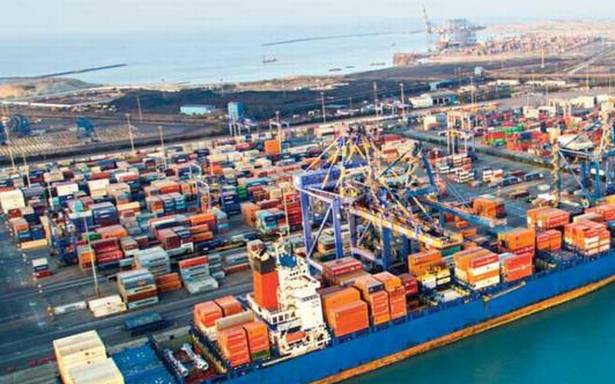
Mundra Port to gain in short run due to partial DFC rollout: JNPT Chairman
MUMBAI : Jawaharlal Nehru Port Trust (JNPT) Chairman Sanjay Sethi says once the railways’ Dedicated Freight Corridor (DFC) project is partially rolled out (646 km stretch between Rewari in Haryana to New Palanpur in Gujarat), sea ports in Gujarat including Adani Group‘s will gain some initial volume, insisting that a market-driven rail tariff will ultimately decide the winner.
Edited excerpts of an email interview:
How much will JNPT lose once direct freight trains run between North India and Gujarat ports, leaving your port out?
The rail co-efficient as compared to the throughput was around 25% at JN Port till the year 2006, of which almost 50% of the volume was owned by the NCR (National Capital Region). However after the commissioning of Mundra and Ports, the volume of NCR cargo to JN Port drastically reduced due to closer proximity and lesser freight cost. The total rail volume handled at JN Port in FY 2020-21 was 9, 22,640 TEUs (Twenty-foot Equivalent Unit), out of which only 20% was of the NCR region.
Various destinations are covered under NCR region, such as New Delhi, Dadri, Kanpur, Panki, Ballabhgarh, Malanpur, Garhi-Harsaru, Agra, Moradabad, Loni Ludhiana, Jaipur, Patparganj, Rewari and Sonipat etc. Out of which around 50% of the NCR volume originates from Dadri and Tugalakabad which are the starting points of the DFC. This is the volume that can be anticipated to be lost once the direct freight trains begin to run between North India and Gujarat ports.
Commencement of dedicated freight trains in its first phase from Northern India to Gujarat ports will surely have an impact, but how much will be the impact is yet to be ascertained; it depends on a number of factors. Presently US, China, Europe and Middle East are India’s major trading partners by sea. JNPT provides a maximum number of sailings. Mundra and Pipavav over the years are already catering to EXIM (export-Import) trade from Northern India and certainly, with this partial commissioning of the DFC, Mundra and other ports in Gujarat do stand to gain. JNPT may lose the cargo anywhere between 10-20% of the present ICD volume in the short run. However, JNPT will surely regain it once DFC trains reach JNPT too. Also, we need to factor in the growth of containerised EXIM trade.
Which among Gujarat ports will be the key challenger to you once DFC freights move?
Each of the ports in Gujarat has its own strength and captive cargo catchment. Mundra with adequate capacity does stand to gain more initially. Predominantly, Mundra Port would pose a challenge to JNPT once the partial commissioning of DFC is done. As many of the shipping lines call at both JNPT and Mundra Port, early connectivity of DFC established to Mundra will only dent the rail volumes at JNPT especially from NCR.
As the land acquisition for the DFC in some areas in Maharashtra (Palghar, Thane etc.) may take more time, do you suspect sea liners will be accustomed to moving freight to Gujarat ports even after DFC gets extended to JNPT?
In case of DFC, the first mover advantage gained by Mundra Port naturally would get it some volume during the initial period of commissioning, but at a later stage the market-driven rail tariff will decide the volume between Mundra and JNPT. Rail tariff at Mundra Port is more dynamic as their commercial rates vary from customer to customer; there is less consistency and transparency in their charges. The JNPT system is more consistent and transparent. It will attract back the lost volume with the increase in EXIM cargo in the forthcoming years.
Source : The Economic Times
